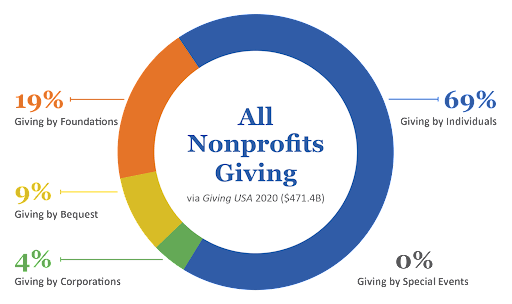Examining the Difficulties and Opportunities Encountered by a Nonprofit Company in Getting Its Objective and Goals in Today's Culture
In the present landscape, nonprofit agencies are navigating a complicated variety of obstacles, such as varying funding resources and boosted competition for benefactor interaction. These problems, while intimidating, can likewise unlock opportunities for technology and cooperation that might boost their capacity to meet missions. By examining how nonprofits can tactically adjust to these characteristics, we can discover not just the approaches they use to conquer obstacles but additionally the untapped potential that exists within their functional structures. What remains to be seen is exactly how these companies will certainly harness these possibilities to redefine their impact in culture.
Current Landscape for Nonprofits
The present landscape for nonprofits is characterized by a complex interplay of advancing funding models, increased competition for benefactor focus, and increasing demands for liability and openness. Not-for-profit organizations are significantly diversifying their revenue streams to include gives, individual contributions, company sponsorships, and social enterprise campaigns. This shift mirrors a strategic feedback to traditional funding sources becoming much more competitive and unpredictable.
Moreover, the surge of data platforms has actually transformed how nonprofits engage with potential contributors. Social media, crowdfunding, and on the internet projects are now crucial devices for reaching wider audiences, yet they likewise heighten competitors among organizations trying minimal resources. In this environment, nonprofits have to refine their messaging to effectively capture the passion and dedication of supporters.
Furthermore, stakeholders are requiring higher openness concerning just how funds are allocated and the quantifiable effect of not-for-profit tasks. This fad demands that organizations embrace durable accountability steps, including detailed reporting and evaluation structures, to show their effectiveness. Subsequently, the nonprofit industry is browsing a landscape that calls for ingenious reasoning, tactical flexibility, and a commitment to honest techniques in order to thrive in the middle of these vibrant obstacles and chances.
Trick Difficulties Encountered
Navigating the not-for-profit sector provides a myriad of challenges that can prevent business efficiency and sustainability. Among the most pressing concerns is the dependence on irregular funding resources. Nonprofits usually rely on gives, donations, and government support, which can change significantly, resulting in economic instability and troubles in long-term planning.

Personnel retention and volunteer interaction present more obstacles, as several nonprofits battle to provide affordable incomes and benefits. The high turnover rates can interfere with organizational continuity and influence solution distribution.
Moreover, adjusting to technological innovations and digital change remains an obstacle for numerous nonprofits. An absence of resources and expertise can prevent organizations from leveraging technology properly, thus limiting their outreach and efficiency.
Eventually, these obstacles call for nonprofits to employ strategic planning and ingenious approaches to maintain their mission and make sure sustainability in a Learn More complicated landscape. nonprofit agency.
Emerging Opportunities
Exactly how can nonprofits harness arising possibilities to boost their impact? In today's rapidly developing landscape, nonprofits have the chance to leverage technological innovations, changing social characteristics, and raised public awareness to further their objectives. The rise of digital systems enables organizations to expand their reach, engaging with varied target markets and promoting area links. By using social media sites and online fundraising tools, nonprofits can increase visibility and attract more youthful contributors that are extra likely to sustain reasons they reverberate with.
Moreover, cooperation with services and various other sectors is becoming much more widespread, offering nonprofits with access to resources, proficiency, and cutting-edge remedies. Partnerships can magnify campaigns, drive area engagement, and create lasting impacts. Additionally, the expanding he has a good point emphasis on corporate social responsibility supplies nonprofits opportunities to align with organizations that focus on social influence, gaining financial backing and shared objectives.
The raising concentrate on data-driven decision-making enables nonprofits to better examine their programs and end results, boosting accountability and performance. By embracing these arising possibilities, nonprofits can not only strengthen their operational capacities however additionally broaden their influence in resolving pressing societal concerns, ultimately driving purposeful change in their neighborhoods.
Methods for Adjustment
Adjusting to a constantly changing setting is vital for nonprofits aiming to sustain their impact and efficiency. To browse the intricacies of modern-day society, nonprofits should apply critical approaches that enhance their strength and responsiveness.
One secret method involves leveraging modern technology to expand and simplify procedures outreach. By utilizing electronic systems, nonprofits can improve communication with stakeholders, enhance fundraising initiatives, and boost recognition of their goal. Additionally, taking on data-driven decision-making methods allows organizations to analyze their programs' efficiency and change strategies based upon empirical proof.
Collaboration with various other companies-- both not-for-profit and for-profit-- can foster source sharing and technology. nonprofit agency. Partnerships can result in common know-how, funding opportunities, and expanded networks, ultimately magnifying the collective effect
Moreover, growing a society of versatility within the company is important. Educating team to embrace modification and motivating innovative problem-solving can equip teams to react properly to emerging obstacles.
Case Studies and Success Stories
Successful adaptation approaches in the nonprofit market can often be shown with engaging case research studies and success tales. One significant example is the "Feeding America" network, which transformed its operations during the COVID-19 pandemic. By leveraging technology and community partnerships, the company scaled its food circulation initiatives to meet the extraordinary need, serving countless family members who encountered food insecurity.
One more impactful instance is the "Boys & Girls Clubs of America," which adapted its programs to an online layout throughout lockdowns. By introducing on-line mentorship and appealing tasks, they maintained connections with youth throughout the nation, making sure ongoing assistance and development in spite of the difficulties posed by my review here social distancing.
Similarly, the "World Wild Animals Fund" has actually efficiently integrated community-based conservation approaches, equipping regional populaces to join wild animals protection initiatives. This approach not only fosters neighborhood possession however also improves environmental sustainability.
These study highlight exactly how nonprofits are not just dealing with immediate difficulties yet are also developing long-term solutions that line up with their missions. By sharing such success stories, organizations can influence others to adapt and introduce, eventually driving favorable modification within their areas.

Verdict
In final thought, nonprofit firms today navigate an intricate landscape characterized by monetary instability, competition, and labor force challenges. Eventually, addressing both challenges and possibilities will be vital for nonprofits to fulfill their objectives and achieve long lasting influence in society.
In the present landscape, not-for-profit agencies are browsing an intricate range of obstacles, such as rising and fall funding resources and increased competition for contributor involvement. The nonprofit industry is navigating a landscape that calls for cutting-edge thinking, tactical versatility, and a dedication to ethical methods in order to grow among these vibrant challenges and opportunities.
Navigating the nonprofit market offers a myriad of obstacles that can prevent business effectiveness and sustainability.In conclusion, nonprofit companies today navigate a complicated landscape defined by monetary instability, competitors, and labor force difficulties. Inevitably, resolving both opportunities and difficulties will be critical for nonprofits to fulfill their missions and achieve long lasting influence in culture.